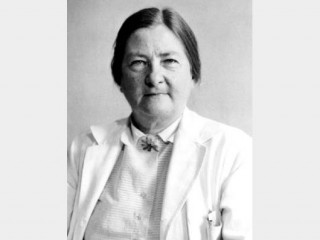
Dorothy Andersen biography
Date of birth : 1901-05-15
Date of death : 1963-03-03
Birthplace : Ashville, North Carolina
Nationality : American
Category : Science and Technology
Last modified : 2011-02-23
Credited as : Medical researcher, physician, cystic fibrosis
Dorothy Andersen was the first medical researcher to recognize the disorder known as cystic fibrosis.
Dorothy Andersen was the first medical researcher to recognize the disorder known as cystic fibrosis. She devoted much of her life to the further study of this disease, as well as to study of congenital defects of the heart. During World War II, Anderson was asked to develop a training program in cardiac embryology and anatomy for surgeons learning techniques of open-heart surgery.
Dorothy Hansine Andersen was born on May 15, 1901, in Asheville, North Carolina. She was the only child of Hans Peter Andersen and the former Mary Louise Mason. Hans Peter Andersen was a native of Denmark and was employed by the Young Men's Christian Association (YMCA) in Asheville. Andersen's mother was a descendent of Benning Wentworth, for whom the town of Bennington, Vermont, was named.
Andersen was forced to take responsibility for her own upbringing early in life. Her father died when she was thirteen years old, leaving behind an invalid wife dependent on her daughter's care. They moved to Saint Johnsbury, Vermont, where Mary Andersen died in 1920. Her death left young Dorothy "with not a single close relative," according to biographer Libby Machol in Notable American Women.
Andersen put herself through Saint Johnsbury Academy and Mount Holyoke College before enrolling in the Johns Hopkins School of Medicine, from which she received her M.D. in 1926. While still a medical student, Andersen published in the journal Contributions to Embryology two scientific papers dealing with the reproductive system of the female pig. After graduating from Johns Hopkins, Andersen accepted a one-year position teaching anatomy at the Rochester School of Medicine. She then did her internship in surgery at the Strong Memorial Hospital in Rochester, New York. For medical students an internship is normally followed by a residency, which ultimately leads to certification as a physician. Andersen found, however, that she was unable to find a hospital that would allow her to do a residency in surgery or to work as a pathologist, her other major interest. The reason for this slight, according to Machol, was that Andersen was a woman.
Denied the opportunity to have a medical practice, Andersen turned instead to medical research. She took a job as research assistant in pathology at Columbia University's College of Physicians and Surgeons that allowed her to begin a doctoral program in endocrinology, the study of glands. She completed the course in 1935 and was granted the degree of doctor of medical science by Columbia University. From 1930 to 1935 Andersen also served as an instructor in pathology at the Columbia Medical School. Andersen later accepted an appointment as a pathologist at Babies Hospital of the Columbia-Presbyterian Medical Center in New York City, where she stayed for more than twenty years, eventually becoming chief of pathology in 1952. By 1958 she had become a full professor at the College of Physicians and Surgeons.
Andersen's research interests fell into two major categories. The first of these involved a long and careful study of congenital (existing from birth) heart problems based on the examination of infants who had died of cardiac conditions. She began that study during her first year at Babies Hospital and was still publishing her findings on the subject in the late 1950s. Andersen's experience with cardiac problems was put to use during World War II when she was asked to teach courses for physicians who wanted to learn how to conduct open-heart surgery.
The second area of research, for which Andersen is probably best known, evolved out of her discovery in 1935 of cystic fibrosis. That discovery came about during the postmortem examination of a child who had supposedly died of celiac disease, a nutritional disorder. According to Machol, "her researcher's sixth sense alerted, Dr. Andersen searched for similar cases in the autopsy files and in the literature." Eventually she realized that she had found a disease that had never been described in the medical literature, to which she gave the name cystic fibrosis. Cystic fibrosis is a congenital disease of the mucous glands and pancreatic enzymes that results in abnormal digestion and difficulty in breathing; it is believed to affect approximately one in fifteen hundred people. Over the next twenty-six years, Andersen was successful in developing diagnostic tests for cystic fibrosis but less successful in her efforts to treat and cure the disease.
Andersen died of lung cancer in New York City on March 3, 1963. A contributing factor may well have been her smoking habits. As Machol has written: "Ashes from the cigarette that usually dangled from the corner of her mouth were virtually a part of her costume." Among the honors Andersen received were the Mead Johnson Award for Pediatric Research in 1938, the Borden Award for Research in Nutrition from the American Academy of Pediatrics in 1948, the Elizabeth Blackwell Citation for Women in Medicine from the New York Infirmary in 1954, a citation for outstanding performance from Mount Holyoke College in 1952, and, posthumously, the distinguished service medal of the Columbia-Presbyterian Medical Center.
















